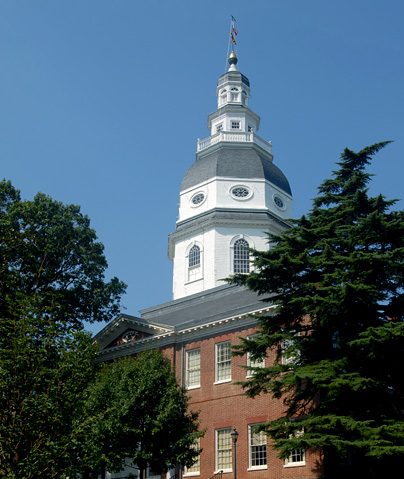On December 6th, the Maryland General Assembly will convene in a special session to consider redistricting the state’s eight Congressional election districts. After each 10-year census, Congressional and state legislative districts are redrawn to reflect population changes.
 A legislative advisory panel, co-chaired by the Senate President and House Speaker, endorsed boundaries that would maintain seven Democratic-leaning seats and one Republican-leaning seat. The Legislative Redistricting Advisory Commission’s map would include a small portion of Anne Arundel County north of Annapolis with the Eastern Shore in the 1st Congressional District now held by Congressman Andy Harris. Analysis posted by FiveThirtyEight, a political web site that tracks proposed congressional maps, indicates the proposed boundaries would reduce the partisan lean in the district to +8 Republican from +28 in the current map. The map would also make the Democratic-leaning 6th District in western Maryland and the strongly Democratic 2nd District in central Maryland more competitive.
A legislative advisory panel, co-chaired by the Senate President and House Speaker, endorsed boundaries that would maintain seven Democratic-leaning seats and one Republican-leaning seat. The Legislative Redistricting Advisory Commission’s map would include a small portion of Anne Arundel County north of Annapolis with the Eastern Shore in the 1st Congressional District now held by Congressman Andy Harris. Analysis posted by FiveThirtyEight, a political web site that tracks proposed congressional maps, indicates the proposed boundaries would reduce the partisan lean in the district to +8 Republican from +28 in the current map. The map would also make the Democratic-leaning 6th District in western Maryland and the strongly Democratic 2nd District in central Maryland more competitive.
A second map proposed by the Maryland Citizens Redistricting Commission, chaired by retired Federal Court Judge Alexander Williams and appointed by Governor Hogan, would result in six Democratic-leaning seats and two Republican-leaning seats. The map changes the partisan make up of the 6th District in western Maryland to +17 Republican from +16 Democratic in the current map.
Nationally, Congressional watchers and political analysts forecast a gain in Congressional seats for Republicans. Data from the Cook Political Report shows that Republicans control 20 state legislatures, covering 187 congressional districts, while Democrats control redistricting in eight states with 75 districts. Under certain scenarios, the combination of redistricting and mid-term elections results in the Republican Party regaining control of the House of Representatives.